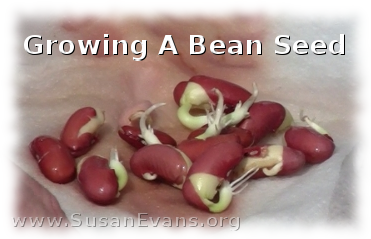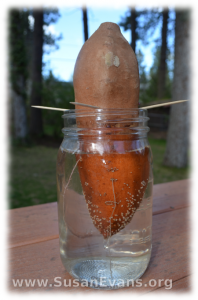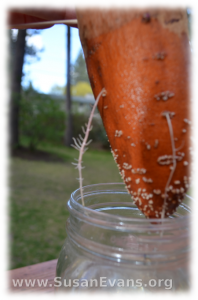You can order live amoebas! You ask, “Why on earth would I want to order live amoebas?” Well, if you are studying biology and you are not impressed by the dead amoeba specimen in the slide set, you will want to order a live amoeba so that you can actually see it move! You know, with its pseudopods squishing along.
Of course, I was reluctant when my son began begging me for live amoebas. After all, I grew up in a third-world country where I suffered from amoebas all the time. Let me tell you, they are everywhere: in the water, in the strawberries, in the ice cubes… Don’t drink the water from third-world countries. Just don’t.
But the sweet begging of my son and the fact that he had aced his biology exams at age 11 caused me to re-examine my reluctance. After talking it over with my husband, we decided to order them. My son screamed, “Yes!!” as if he had scored a goal.
We ordered our live amoebas from this company. I was disappointed by 2 things:
- It looks like they only cost $7, but they force you to do at least 2-day shipping (or the amoebas will die), so it’s more like $30. I would rather they had said, “This will cost you a total of $30, plus any medicine you will need to get rid of the sickness in your house.” (I’m just kidding about the sickness. None of us got sick.) But the amoebas cost $30. I still think they were worth ordering.
- When the flask arrived in the mail, my son jumped up and down like it was Christmas. At first we could not find ANY amoebas. They say there are enough amoebas for a classroom full of 30 kids, so I was expecting the amoebas to be easy to find. My son’s right eyeball was going blurry as he asked me to please look until my right eye went blurry. Then I called my husband to come home from work and look, and of course, my husband found one. Because he is my knight in shining armor, and he always saves the day in our homeschool.
 My son squealed with delight when we actually captured the moving amoeba with his microscopic camcorder he got for Christmas last year. He was excited to see the live amoebas moving around with their pseudopods, sloshing along. We filmed the amoebas with a micro-camera, and we will be uploading the video to the huge biology section of the Unit Study Treasure Vault. (You should join the Vault if you are studying biology, because there are lots of fun videos and printables of every topic covered in a typical high school biology textbook.)
My son squealed with delight when we actually captured the moving amoeba with his microscopic camcorder he got for Christmas last year. He was excited to see the live amoebas moving around with their pseudopods, sloshing along. We filmed the amoebas with a micro-camera, and we will be uploading the video to the huge biology section of the Unit Study Treasure Vault. (You should join the Vault if you are studying biology, because there are lots of fun videos and printables of every topic covered in a typical high school biology textbook.)
Thankfully none of us got sick, and we disposed of the amoebas in a sealed container in the trash. Since amoebas need oxygen to survive, they pretty much die within a few days.
I must say that the live amoebas looked “gorgeous,” according to my son. They looked like they were full of Christmas lights, since they had lots of vacuoles for getting rid of excess water. The nucleus kept moving around, and the amoeba squished itself forward, right in front of our eyes. Amazing!









